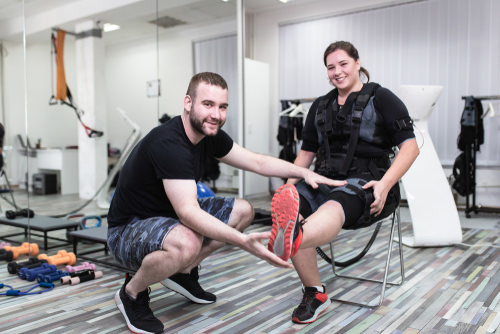When an injured worker in Nevada has completed medical treatment and his or her condition is unlikely to improve, the case will be settled. The workers’ compensation insurance company will notify an injured worker:
- the claim is going to be closed
- if there is the possibility of permanent disability
- whether the injured worker will receive vocational rehabilitation benefits.
An injured worker will receive a letter called a Notice of Intent to Close Claim.
This will indicate that the insurance company believes all benefits have been paid up to that point and whether or not an evaluation is set to determine what permanent disability may be awarded.
If permanent disability is due, the injured worker will also receive a:
- determination of permanent disability benefits and monthly payments; or
- lump sum settlement of permanent disability under 30%
If an injured worker cannot return to work due to an injury he or she will receive:
- vocational rehabilitation benefits; or
- a lump sum rehabilitation settlement
An insurance company that overpays an injured worker can deduct the overpayment from future benefits. However, the insurance company has 30 days after the overpayment to claim it.
If an injured worker disagrees with the decision of the insurance company, he or she can file an appeal of a decision of the workers’ compensation insurance company.
An appeal of a medical benefits issue must be made within 14 days of the decision, while an appeal of a disability benefit issue must be made within 70 days of the decision.
In this article, our Nevada workers’ compensation attorneys will explain:
- 1. End of a Nevada workers’ compensation claim
- 2. Overpayment by the insurance company
- 3. Appeal of insurance company decision
- 4. An injured worker does not have to accept the insurance company settlement

When the insurance company determines it has paid all the benefits due it will notify the injured worker by letter.
1. Settlement of a Nevada workers’ compensation claim
An insurance company determines how and when an injured worker’s claim will be settled.
When the insurance company determines it has paid all the benefits due, it will notify the injured worker by letter.1
The injured worker must have completed medical treatment and may or may not be entitled to permanent disability benefits and vocational rehabilitation.
How and when a claim is settled depends on the benefits an injured worker is entitled to. Even after settlement, it may be possible to reopen a workers’ compensation claim in Nevada if new complications arise from the injury.
1.1. Medical benefits
Medical treatment is referred to in Nevada workers’ compensation as accident benefits. If accident benefits are minimal, it’s unlikely the claim will remain open longer than one year.
If accident benefits are less than $800 in the first six months of the claim, the insurance company must notify the injured worker that the claim may be closed after one year.2
If the medical benefits are less than $800 after one year, the insurance company can close the claim as long as no additional medical treatment is scheduled.3
The injured worker must notify the insurance company if he or she has future medical appointments.
The injured worker will not receive any lump sum payment when the claim is closed due to minimal medical treatment if there is no permanent disability or vocational rehabilitation benefits awarded.
Notification to injured worker
An insurance company has to notify the injured worker of his or her rights in order to properly close a claim for minimal medical treatment.
The insurance company must notify the injured worker:
- the claim is being closed;
- the injured employee may appeal the closure of the claim
- if the injured employee does not appeal the closure of the claim or appeals the closure of the claim but is not successful, the claim cannot be reopened4
The insurance company must also note:
- if an evaluation for a permanent partial disability has been scheduled or
- if an evaluation for a permanent partial disability will not be scheduled, it must issue a statement explaining that the reason is that the insurer has determined there is no possibility of a permanent impairment of any kind.5
Example: Jordan has an injury to her wrist. She has minimal medical treatment in the first six months totaling $400.
The insurance company sends her a notice that absent further treatment the claim will be closed at one year.
Jordan has no further treatment. The insurance company sends a Notice of Intent to Close Claim. If Jordan does not appeal, the claim will be closed with no further payments.
1.2. Compensation benefits
When an injured worker’s claim is closed, he or she may be scheduled for an evaluation for permanent disability. This is to compensate an injured worker for the permanent and lasting effects of an injury.
A doctor will evaluate the injured worker and determine the percentage of loss of function. The insurance company will calculate the dollar value of this.
An insurance company uses a Permanent Partial Disability Award Calculation Worksheet to calculate the value and monthly payment of the award.
The worksheet will be different depending on whether the award for the percentage of loss of function is less than or greater than 30%. Payment of permanent disability can be paid in a lump sum if the award is less than 30%.6 Otherwise, the benefits will be paid out in monthly installments until the worker reaches age 70.
An injured worker who takes a lump sum gets the present value of the payments. This means that the injured worker is given a sum that, if invested, would approximately equal the monthly payments until age 70.
By accepting the lump sum, the injured worker gives up the right of appeal, but he or she still has the right to:
- reopen a claim
- obtain rehabilitation benefits
- request penalties
Example: Karen is 38 years old is issued an award of 24%. Instead of receiving monthly payments of $224 a month until age 70 she gets a lump sum of $36,025.
Karen cannot reopen her claim. But because she cannot work at her prior job, she gets vocational rehabilitation benefits.

When an injured worker’s claim is closed, he or she may be scheduled for an evaluation for permanent disability.
1.3. Rehabilitation Benefits
An employee who is eligible for vocational rehabilitation benefits can proceed with those benefits, which include:
- vocational rehabilitation services – retraining
- vocational rehabilitation maintenance allowance – cash payments during retraining
Alternatively, an injured worker and the insurance company can agree to settle the worker’s vocational rehabilitation by way of a lump sum settlement.7 Neither side is required to settle the vocational rehabilitation benefits.
The settlement must be at least 40% of the maximum maintenance allowance benefits the injured worker would be entitled to.8
In order to obtain a lump-sum settlement, the injured worker needs to file a lump sum request form and lump-sum agreement form.
An injured worker who agrees to a vocational rehabilitation lump sum settlement has 20 days to cancel the agreement after signing it.9
Example: Ciara’s injury does not allow her to return to work. She decides she does not want vocational rehabilitation and instead wants a lump sum payment.
She talks to her rehabilitation counselor and agrees to settle her vocational rehabilitation for $4,000. She has 20 days to back out of the agreement.
2. Overpayment by the insurance company
An insurance company that learns it has overpaid an injured worker within 30 days of the overpayment can deduct the overpayment from future benefits.10
The insurance company does this by:
- notifying the injured employee in writing
- informing the injured employee his or her right to contest the deduction; and
- informing the injured employee if he or she fails to contest the deduction, it is final11
The deduction cannot be structured so that it causes undue hardship to the injured worker.12
Example: The insurance company in Micah’s claim overpaid his temporary disability by $500. It notifies Micah that it will deduct $50 a month from Micah’s monthly permanent partial disability payments for ten months.
Micah does not object to this, and the $50 is deducted.
3. Appeal of insurance company decision
An injured worker who disputes the decision of the insurance company can file an appeal of the decision.
The appeal can be related to medical treatment, referred to as accident benefits, or to compensation benefits such as temporary disability or permanent disability.
The injured worker has 14 days to appeal a medical decision and 70 days to appeal a compensation benefit determination.
Example: Janet receives a letter from the insurance company that it does not believe she has any permanent partial disability.
Janet does not have to accept this decision. She appeals within the 70 days, and a hearing officer will determine if she is entitled to permanent disability.
4. An injured worker does not have to accept the insurance company settlement
The Nevada workers’ compensation system is set up so that the insurance company determines when a claim ends.
The insurance company must settle a claim according to the workers’ compensation laws. However, it will want to minimize any payments to injured workers.
An injured worker should be aware of all of his or her rights and benefits and carefully review an insurance company settlement.
Call us for help…

If you or someone you care about was injured at work, our legal team can help you to file a Nevada worker’s compensation claim. (For cases in California, please see our page on settlement of workers’ compensation claims in California.)
For a free consultation to discuss your case simply fill out the form below or call us.
Legal References:
- Nev. Rev. Stat. § 616C.235
- Nev. Rev. Stat. § 616C.235(3)
- Nev. Rev. Stat. § 616C.235(2)
- Nev. Rev. Stat. § 616C.235(2)
- Nev. Rev. Stat. § 616C.235(5)
- Nev. Rev. Stat. § 616C.495(1)(g)
- Nev. Rev. Stat. § 616C.595
- Nev. Rev. Stat. § 616C.595
- Nev. Rev. Stat. § 616C.595(3)
- Nev. Rev. Stat. § 616C.155(1)
- Nev. Rev. Stat. § 616C.155(2)
- Nev. Rev. Stat. § 616C.155(3)

